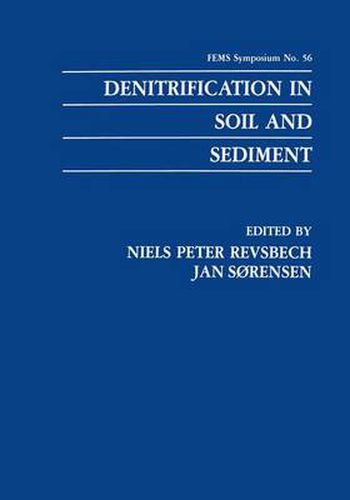Readings Newsletter
Become a Readings Member to make your shopping experience even easier.
Sign in or sign up for free!
You’re not far away from qualifying for FREE standard shipping within Australia
You’ve qualified for FREE standard shipping within Australia
The cart is loading…






This title is printed to order. This book may have been self-published. If so, we cannot guarantee the quality of the content. In the main most books will have gone through the editing process however some may not. We therefore suggest that you be aware of this before ordering this book. If in doubt check either the author or publisher’s details as we are unable to accept any returns unless they are faulty. Please contact us if you have any questions.
The formation of atmospheric nitrogen gas by denitrifying bacteria may represent a significant nutrient sink in natural ecosystems. The rate of denitrification has often been difficult to measure in situ, however, and new methodologies should stimulate research on distribution of activity in space and time. The load of fertilizer nitrogen in modem agriculture has led to increasing nutrient reservoirs in recipient subsoils, aquifers, inland waters and coastal seas. By its conversion of nitrate to atmospheric nitrogen, bacterial denitrification is the only biological process to potentially reduce the impact of increasing nutrient loadings by fertilizer nitrogen in the environment. As part of a scientific program set up by the Danish Ministry of Environment to study environment cycling of nitrogen, phosphorous and organic matter (NPO program) in the light of agricultural, domestic and industrial activities, a symposium on DENITRIFICATION IN SOIL AND SEDIMENT was held at the University of Aarhus, Denmark from 6-9 June 19i\9. On the basis of lectures given at the symposium, this book contains a number of invited contributions on the regulation of denitrification activity (control of enzyme synthesis and activity) and measurement of in situ rates of denitrification in terrestrial and aquatic environments (control factors, diel and seasonal variations, etc). Emphasis has been placed on including the recent improvements in methodologies and current understanding of process regulation, however the book also contains examples of integrated research on the significance of denitrification in environmental nutrient cycling.
$9.00 standard shipping within Australia
FREE standard shipping within Australia for orders over $100.00
Express & International shipping calculated at checkout
This title is printed to order. This book may have been self-published. If so, we cannot guarantee the quality of the content. In the main most books will have gone through the editing process however some may not. We therefore suggest that you be aware of this before ordering this book. If in doubt check either the author or publisher’s details as we are unable to accept any returns unless they are faulty. Please contact us if you have any questions.
The formation of atmospheric nitrogen gas by denitrifying bacteria may represent a significant nutrient sink in natural ecosystems. The rate of denitrification has often been difficult to measure in situ, however, and new methodologies should stimulate research on distribution of activity in space and time. The load of fertilizer nitrogen in modem agriculture has led to increasing nutrient reservoirs in recipient subsoils, aquifers, inland waters and coastal seas. By its conversion of nitrate to atmospheric nitrogen, bacterial denitrification is the only biological process to potentially reduce the impact of increasing nutrient loadings by fertilizer nitrogen in the environment. As part of a scientific program set up by the Danish Ministry of Environment to study environment cycling of nitrogen, phosphorous and organic matter (NPO program) in the light of agricultural, domestic and industrial activities, a symposium on DENITRIFICATION IN SOIL AND SEDIMENT was held at the University of Aarhus, Denmark from 6-9 June 19i\9. On the basis of lectures given at the symposium, this book contains a number of invited contributions on the regulation of denitrification activity (control of enzyme synthesis and activity) and measurement of in situ rates of denitrification in terrestrial and aquatic environments (control factors, diel and seasonal variations, etc). Emphasis has been placed on including the recent improvements in methodologies and current understanding of process regulation, however the book also contains examples of integrated research on the significance of denitrification in environmental nutrient cycling.